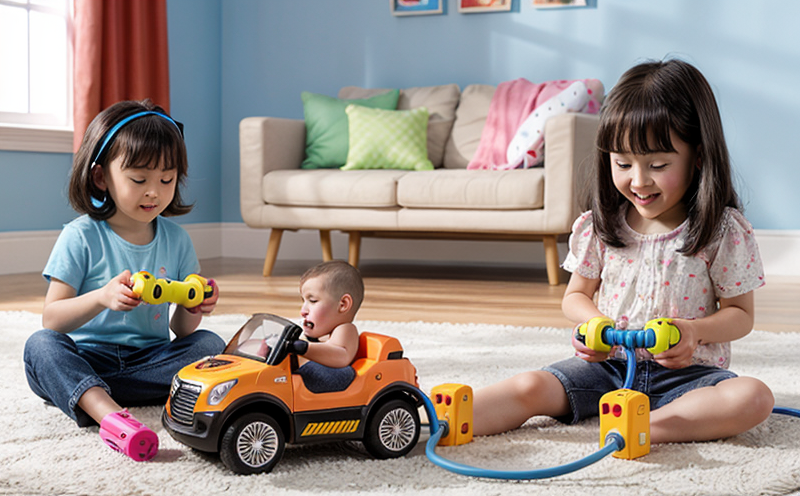Daily Use Electrical Switch Durability Test
The daily use electrical switch durability test is a critical procedure aimed at ensuring that switches used in toys are robust and reliable, especially those designed for frequent or prolonged usage. This testing ensures the safety of children by preventing potential hazards such as short circuits, electric shocks, and other malfunctions. The primary objective is to validate that the switch can withstand repeated activation cycles without compromising its performance.
The test typically involves a mechanical actuator that simulates human hand movements to replicate real-world usage patterns. The number of cycles required for this testing varies depending on the intended use of the toy, but standards such as ASTM F963 and EN 71-2 provide specific guidelines. For instance, switches used in toys designed for children aged three years and under may require more stringent durability tests due to their higher frequency of use.
Before testing begins, the switch must be carefully prepared according to specified criteria laid out in international standards like ISO 8063-1 or ASTM F963. This preparation includes ensuring that all components are clean and free from any foreign substances that could affect test results. Once ready, the switch is mounted on a test fixture designed to simulate the actual conditions it will encounter during use.
The testing process itself involves subjecting the switch to repeated actuations over thousands of cycles—often in excess of 10,000 cycles for high-use applications. During these cycles, the tester monitors various parameters including resistance values, continuity checks, and visual inspections for signs of wear or damage. If any issues arise during testing, they are documented immediately so that corrective actions can be taken.
After completion of all specified cycles, further evaluation is conducted to ensure compliance with relevant safety regulations and standards. This includes verifying electrical insulation levels, checking for proper operation under load conditions, and assessing overall durability performance. Compliance reports detailing these findings are then compiled into a comprehensive document that serves as evidence of successful testing.
This service plays an essential role in safeguarding children's health and well-being by guaranteeing the quality and safety of toys they play with every day. By adhering strictly to established protocols, we help manufacturers produce products that meet both regulatory requirements and consumer expectations regarding reliability and longevity.
Industry Applications
- Toys intended for children under three years old, which often experience more frequent use due to their higher energy levels.
- Electrically powered toys with complex control systems where reliability is paramount.
- Puzzles and educational kits that feature interactive components requiring multiple activations over extended periods.
Quality and Reliability Assurance
The daily use electrical switch durability test contributes significantly to maintaining high standards of product quality by identifying potential weaknesses early in the manufacturing process. Through rigorous testing, manufacturers can address any discrepancies before products reach market shelves, thereby reducing recalls and enhancing brand reputation.
Moreover, this service supports continuous improvement efforts within companies by providing valuable insights into how different materials or design modifications affect switch performance. Such information allows for informed decision-making regarding future product iterations, ensuring ongoing improvements in both functionality and safety.
Environmental and Sustainability Contributions
By promoting robustness and durability through thorough testing, this service helps extend the life cycle of toys made from sustainable materials. This not only reduces waste but also encourages responsible consumption practices among consumers.
In addition to its direct environmental benefits, the service fosters a culture of sustainability within toy manufacturing industries by driving innovation towards more efficient and eco-friendly production processes. As demand for greener products continues to grow, adhering to strict testing procedures ensures that companies remain competitive while contributing positively to global efforts against climate change.





